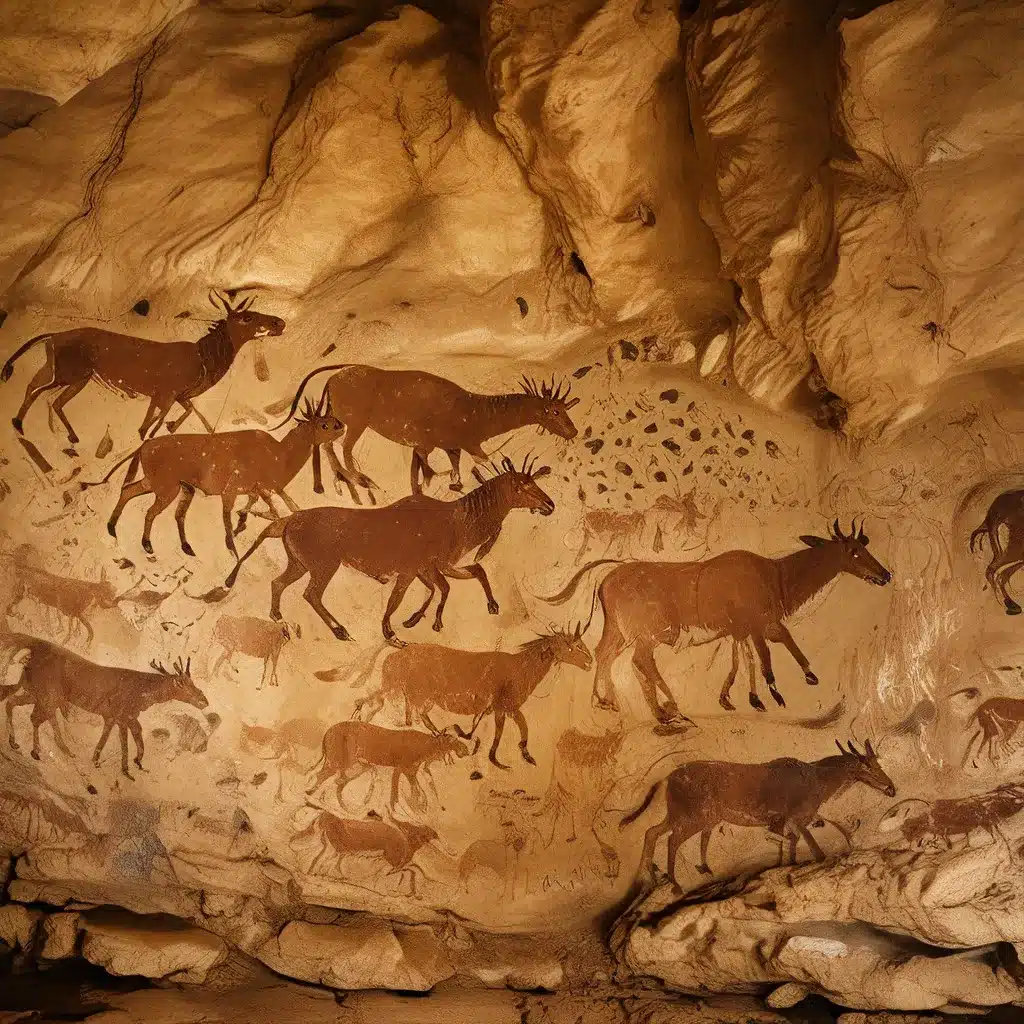
The prehistoric cave art of the world has long captivated scholars, archaeologists, and the general public alike. These ancient murals, carved into the walls of rock shelters and caverns, offer a tantalizing glimpse into the lives, beliefs, and artistic expressions of our ancestors. For centuries, researchers have sought to unravel the mysteries behind these remarkable works of art, but their efforts have often been hampered by the delicate nature of the materials and the need to preserve these irreplaceable cultural treasures.
Innovative X-Ray Technology Revolutionizes Rock Art Analysis
Recent developments in portable X-ray technology, however, have opened up new avenues of exploration, allowing researchers to gain unprecedented insights into the composition and layering of these ancient paintings without causing any damage to the artwork itself. One such pioneer in this field is Dr. Karen Steelman, a researcher at the Shumla Archaeological Research and Education Center in Texas, who has been using a technique called portable X-ray fluorescence spectroscopy (pXRF) to analyze rock art sites across the Lower Pecos Canyonlands.
Steelman and her team have been able to use the pXRF device to measure the elemental composition of the pigments used in the rock art, as well as the underlying geological canvas, without the need for invasive sampling. This has allowed them to unveil previously hidden layers of paint, including black pigments that had been obscured by the upper layers of red and yellow ochre. By understanding the complex layering and composition of these murals, the researchers have been able to gain new insights into the artistic techniques and ritual practices of the ancient hunter-gatherer societies that inhabited the region.
Uncovering the Secrets of the Rattlesnake Canyon Site
One of the most significant sites that Steelman and her team have investigated is the Rattlesnake Canyon Site, located along the Rio Grande. This site is known for its array of pictographs, which cover a massive 105-foot wide mural. Using the pXRF technology, the researchers were able to analyze 138 areas where the composition indicated overlapping pigments of red, black, white, and yellow, as well as 90 locations of unpainted limestone, providing valuable insights into the geological canvas upon which the art was created.
The pXRF analysis revealed previously unseen layers of black pigment beneath the layers of red and yellow ochre, indicating a sophisticated artistic process employed by the ancient inhabitants of the region. Furthermore, the researchers were able to identify traces of lead, mercury, and selenium at certain impact sites on the mural, suggesting that the site had suffered from gunshot damage, likely dating back to the early 1900s.
Preserving the Oldest Books in North America
The Lower Pecos Canyonlands of Texas, where the Rattlesnake Canyon Site is located, is home to over 350 known rock art sites, which the researchers at Shumla have described as the “oldest books in North America.” These ancient murals, which date back as far as 2500 BCE, provide a unique window into the lives and beliefs of the hunter-gatherer societies that once inhabited the region, and their preservation is of paramount importance.
The Lost Kingdoms, a website dedicated to exploring the mysteries of ancient civilizations, has been following the work of Steelman and her team with great interest. The ability to non-invasively analyze the composition and layering of these rock art masterpieces has the potential to revolutionize our understanding of the cultural and artistic achievements of these long-vanished societies, as well as the threats they face from natural and human-caused damage.
Preserving the Past for Future Generations
As the researchers at Shumla continue to utilize the pXRF technology to document and analyze the rock art sites of the Lower Pecos Canyonlands, they are racing against time to preserve these irreplaceable cultural treasures. Flooding along the Rio Grande poses a major threat to these ancient murals, and the team is committed to cataloging and studying as many sites as possible before they are lost to the ravages of nature.
The insights gained from these pioneering analyses have the potential to transform our understanding of prehistoric art and culture, shedding light on the artistic techniques, ritual practices, and worldviews of our ancestors. By sharing these findings with the wider public, researchers like Steelman are not only preserving the past but also inspiring a new generation of scholars and enthusiasts to continue unraveling the mysteries of the ancient world.
The Lasting Significance of Prehistoric Cave Art
The prehistoric cave art of the world, from the iconic paintings of Lascaux in France to the intricate murals of the Lower Pecos Canyonlands, represents a profound and enduring legacy of human creativity and cultural expression. These ancient works of art bear witness to the ingenuity, spirituality, and resilience of our ancestors, and their preservation is essential to our understanding of our shared human heritage.
As new technologies, such as portable X-ray fluorescence spectroscopy, continue to unlock the secrets of these ancient masterpieces, we are presented with an unprecedented opportunity to deepen our appreciation and understanding of the rich tapestry of human history. By preserving and studying these irreplaceable cultural treasures, we not only honor the past but also inspire future generations to continue exploring the wonders of the ancient world.


